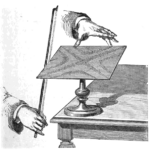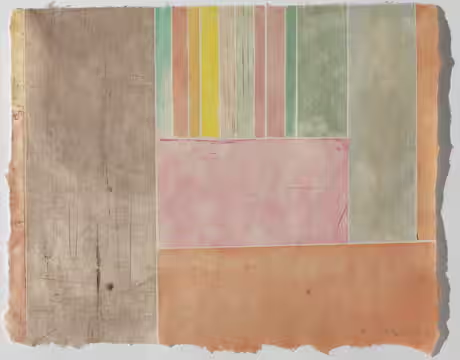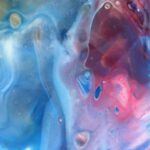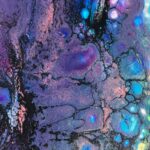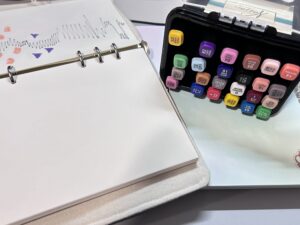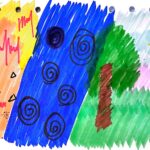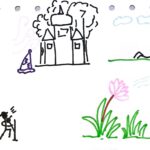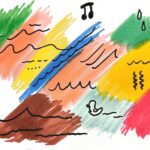The Shape of Sound: Explore Sound Visualization

Summary
The main purpose of this open toolkit is to understand the shape of sound. We will learn the basic properties of sound, the source and application of sound visualization, and participants will use paper and markers to change the sounds they hear into different shapes and colors.
Go ahead and imagine, creating your own sound shape!
Introduction
For a long time, our understanding of sound has been “listening” because sound is abstract. Can we hear and see sound at the same time? Interestingly, the answer is yes. In fact, many artists have made related attempts to combine sound with art, allowing the audience to see the shape and color of sound. In addition to art exhibitions, sound visualization is also used in many fields such as education and healthcare. By giving shape to the sound, the hearing impaired can also see and understand the sound.
The word sound, therefore, has three very different meanings: it expresses first, everything that can be heard (in German, Schall); second, regular or perceptible vibrations (in German, Klang) as opposed to noise; third, the frequency of the vibrations (in German, Ton). The word ton is not used in French, as it is in other languages, to express the frequency of the vibrations in each sound.(Chladni, E. F. F, and Robert T Beyer, 2015)
The shape of sound can be traced back to the 18th century. In Chladni’s first work, reported in 1787, he held fixed one or more points on a plate and stroked the side of the plate with the bow of a violin. In order to render the effect of the vibrations visible, he placed a little sand on the plate. The sand “was thrown aside by the trembling of the vibrating parts (of the plate) and accumulated on the nodal lines.” The patterns formed by these lines are what are now called Chladni figures. Craney is therefore revered as the “father of acoustics”. (Chladni, E. F. F, and Robert T Beyer, 2015)
- Ernst Chladni (Wikipedia, 2024)
- Bowing chladni plate(Wikipedia, 2024)
The number of times an object vibrates in a second is called frequency and is measured in Hertz. The sound of different vibration frequencies is different, and the shape of the sound is different. Let’s take a look at a video to see how the sand table looks visually at different amplitudes.
The present results demonstrate clear, robust connections between music and color that are widely shared across both individuals and cultures. They differ from previous findings in that they associate specific dimensions of color (saturation, lightness, and yellowness-blueness) with specific high-level musical dimensions (tempo and mode), show clear evidence of mediation by emotional dimensions (happy–sad and angry–calm).For example, spectral yellow and green (lightest) were associated with higher pitches, red and orange (midlightness) with midlevel pitches, and blue and violet (darkest) with lower pitches. The emotional mediation hypothesis suggests that, as people listen to the music, they have emotional responses while listening to music and then pick colors with similar emotional content. For example, Bach’s fast-paced dance in F-major might convey a happy, energetic emotion, consistent with happy, energetic colors (e.g., saturated-yellow and light-yellow) whereas Brahms’ slow-paced Adagio in C-minor might convey sad, depressive feelings, consistent with sad, depressive colors, (e.g., black, dark-gray, and dark-cyan). This hypothesis was assessed by analyzing the emotional ratings provided separately for the colors and musical selections. (Palmer, Stephen E. ; Schloss, Karen B. ; Xu, Zoe ; Prado-León, Lilia R,2013)
Many artists have been inspired by the vibrational shapes of sound and the synesthesia of music and color to create many different works of art. These artworks have different shapes, colors and emotions. From their works, the audience can understand their views on music, analyze what kind of sound they hear, and feel the charm of sound visually. For instance, avant garde composer John Cage, he used the same methods of random composition for his drawings and prints he used for his music. (Brown, Kathan,2002) Other artists have also made artworks about the shape of sound.
- John Cage’s HV2, No 17b
- dancing colors
- 4×4 inch titles
- small paintings to frame
What we should do?
Now we’re going to start creating our own sound shapes!
Materials:
Paper and markers
- paper and markers
Step 1:
Music :
Close your eyes and listen carefully to the music you are about to hear. Ask yourself a few questions:
(1)What images come to mind when you listen to these three pieces of music?
(2)How do these three pieces of music make you feel differently? What colors and lines should be used to represent these emotions?
Step 2:
After you have thought about the above two questions, you will have ten minutes to listen to the music and draw a picture of the sound in your mind. Draw pictures of three songs in your mind on the same piece of paper. You can use any color and line to depict the music.
EXAMPLES:
- example 1 by Chuyue Xu
- example 2 by Chuyue Xu
- example 3 by Chuyue Xu
Step 3:
Show your work to a partner, explain your emotions while listening to the music, and try to describe to your partner why you chose the colors and lines that you did.
Critical Reflection
Is there much preparation required to participate in this program? If so, what preparations are required?
What did I learn in the open toolkit? How well do I understand this knowledge?
What should be improved in the Open Toolkit?
When you share your work with your peers, do you think differently or in the same way?
Did this project spark your interest in sound shapes? Will you go deeper into this field in the future?
And think about how the shape of sound can be used in real life, and how it can change people’s lives.
broaden the knowledge
Image and Video List:
“Ernst Chladni,” Wikimedia Commons, accessed November 27th, 2024, https://blogs.ed.ac.uk/opentoolkits/wpcontent/uploads/sites/8719/2024/11/Echladni-1.jpg
“Bowing chladni plate,”Wikimedia Commons, accessed November 27, 2024, https://commons.wikimedia.org/wiki/File:Bowing_chladni_plate.png
“Amazing Resonance Experiment,” Brusspup, accessed November 27th, 2024, year, https://youtu.be/wvJAgrUBF4w?si=dt6fR3YDNOsQ-R2N
“John Cage’s HV2, No 17b,” John Cage, accessed November 29,2024, https://www.theguardian.com/artanddesign/2010/jul/10/john-cage-composer-drawings-exhibition
“Dancing colors,” Fabian Oefner, accessed November 29, 2024, Sound Visualization: Dancing Colors by Fabian Oefner – Design Swan
“4×4 inch titles,” Judy Rosen, accessed November 29, 2024, Visual Art | Journey Through Ancient Sound.
“small paintings to frame,” Judy Rosen, accessed November 29, 2024, Visual Art | Journey Through Ancient Sound.
Music List:
Benjamin Tissot. “Happy Rack.” 2014. bensound.
Foepound. “Ghostly Presence.” 2024. bensound.
Shaydow. “The Light Between Us.” 2024. bensound.
References:
Chladni, E. F. F, and Robert T Beyer. Treatise on Acoustics: The First Comprehensive English Translation of E. F. F. Chladni’s Traité D’Acoustique. 1st ed. Cham: Springer International Publishing AG, 2015. https://link-springer-com.eux.idm.oclc.org/book/10.1007/978-3-319-20361-4
Palmer, Stephen E, Karen B Schloss, Zoe Xu, and Lilia R Prado-León. “Music–Color Associations Are Mediated by Emotion.” Proceedings of the National Academy of Sciences – PNAS 110, no. 22 (2013): 8836–41. https://doi.org/10.1073/pnas.1212562110.
Pridmore, Ralph W. “Music and Color: Relations in the Psychophysical Perspective.” Color Research & Application 17, no. 1 (1992): 57-61. https://doi.org/https://doi.org/10.1002/col.5080170110. https://onlinelibrary.wiley.com/doi/abs/10.1002/col.5080170110.
Brown, Kathan. “Visual Art.” Chapter. In The Cambridge Companion to John Cage, edited by David Nicholls, 109–27. Cambridge Companions to Music. Cambridge: Cambridge University Press, 2002.
Bragança, Guilherme Francisco F, João Gabriel Marques Fonseca, and Paulo Caramelli. “Synesthesia and Music Perception.” Dementia & Neuropsychologia 9, no. 1 (2015): 16–23. https://doi.org/10.1590/S1980-57642015DN91000004.
Lebeau, Cathy, and François Richer. “Emotions and Consciousness Alterations in Music-Color Synesthesia.” Auditory Perception & Cognition 5, no. 1–2 (2022): 76–85. https://doi.org/10.1080/25742442.2022.2041971.
“Cristine Sun Kim,” accessed December 1, 2024, Christine Sun Kim | Art21.
“Art of Noise,” accessed December 1, 2024, Art of Noise · SFMOMA.
the shape of sound © 2024 by Chuyue Xu is licensed under CC BY-SA 4.0
paper and markers © 2024 by Chuyue Xu is licensed under CC BY-SA 4.0
example 1 © 2024 by Chuyue Xu is licensed under CC BY-SA 4.0
example 2 © 2024 by Chuyue Xu is licensed under CC BY-SA 4.0
example 3 © 2024 by Chuyue Xu is licensed under CC BY-SA 4.0
(https://www.designswan.com/archives/sound-visualization-dancing-colors-by-fabian-oefner.html)
(https://edinburghsoundmassage.com/blog/f/cymatics-the-visual-representation-of-sound-and-vibration)



